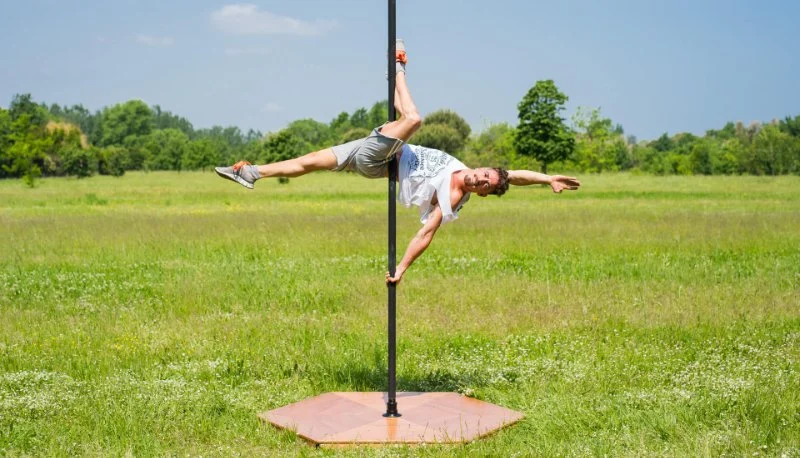 <<<
<<<- Why Pole Dancing? Benefits and Motivation
- Getting Started with Pole Dancing
- Mastering Basic Pole Dance Techniques
- Advanced Pole Dance Moves and Transitions
- Overcoming Common Challenges in Pole Dance
- Recommendations from American Dance Academy
1. Why Pole Dancing? Benefits and Motivation
Pole dancing is not only a fun and exciting activity but also a great form of fitness. Many people start pole dancing to improve their strength, flexibility, and overall fitness. Whether you're interested in building muscle, gaining confidence, or simply enjoying a fun workout, pole dancing offers many benefits for both physical and mental health.
1.1. Physical Benefits of Pole Dancing
Pole dancing helps improve core strength, flexibility, and endurance. The dynamic movements engage multiple muscle groups, making it a full-body workout. From lifting your body weight to spinning around the pole, every move challenges your muscles and helps tone and sculpt your body.
1.2. Mental Benefits of Pole Dancing
Beyond the physical benefits, pole dancing also boosts self-confidence and mental well-being. Learning new moves and mastering them gives you a sense of accomplishment, while the sensuality and creativity involved in pole dancing allow for self-expression and stress relief.
2. Getting Started with Pole Dancing
If you're new to pole dancing, it's important to approach it step by step. Starting with the basics and gradually progressing will help you build the foundation for more advanced moves. Here’s how to begin your pole dancing journey:
2.1. Choose the Right Pole
The first step in getting started is selecting the right pole for your space. You can either buy a portable pole for home use or attend classes at a studio. Make sure the pole is securely installed, as safety is a top priority when practicing pole dancing.
2.2. Prepare for Your First Class
When you’re ready for your first class, wear comfortable, breathable clothing. Avoid lotions or oils on your skin, as they can make the pole slippery. A tank top, shorts, and socks are often recommended, as they allow you to grip the pole better and move freely.
2.3. Start with Basic Warm-ups
Warming up before your session is crucial to prevent injuries. Focus on stretching your arms, legs, and shoulders to prepare your muscles for the upcoming movements. A good warm-up helps improve your flexibility and mobility, making it easier to execute pole dancing techniques safely.
3. Mastering Basic Pole Dance Techniques
As a beginner, it’s important to first master the basic pole dance techniques before progressing to more complex moves. These foundational skills will serve as the building blocks for your future progressions in pole dancing.
3.1. Pole Mounts and Dismounts
Learning how to safely mount and dismount the pole is crucial. A simple pole mount involves gripping the pole and lifting your body up while maintaining control. Dismounts are equally important and should be executed smoothly to avoid injuries.
3.2. The Basic Spin
The basic spin is one of the first moves you’ll learn in pole dancing. To perform the spin, grip the pole firmly, jump or step off the ground, and use your body’s momentum to rotate around the pole. This simple move is the foundation for more advanced spins and transitions.
3.3. Pole Holds and Poses
Holding onto the pole while maintaining control of your body is key to building strength and confidence. Practice basic pole holds, like the “fireman’s spin” or “crucifix,” which engage your core and build muscle memory for more challenging poses in the future.
4. Advanced Pole Dance Moves and Transitions
Once you’ve mastered the basics, you can begin incorporating more advanced pole dance moves and transitions into your routine. These moves require strength, flexibility, and control, and mastering them can elevate your pole dancing performance.
4.1. Inverted Pole Moves
Inverting on the pole is a big milestone for pole dancers. These moves involve lifting your body upside down while holding onto the pole with your legs or arms. Practice basic inverted moves, like the “inverted crucifix” or “inverted chair,” to build strength and gain confidence.
4.2. Aerial Spins and Poses
Aerial spins take the basic spin to the next level by adding more height and fluidity. With enough practice, you’ll be able to perform complex aerial spins, like the “butterfly” or “chair spin,” which require a strong grip and body control.
4.3. Advanced Pole Tricks
As you become more experienced, you can incorporate advanced pole tricks like the “handspring,” “iron X,” or “alley-oop.” These tricks require both strength and flexibility, so it’s important to work with an instructor who can guide you safely through these complex moves.
5. Overcoming Common Challenges in Pole Dance
Like any physical activity, pole dancing comes with its challenges. However, with consistent practice and the right mindset, you can overcome these obstacles and continue to improve your skills.
5.1. Grip and Strength
One of the most common challenges in pole dancing is building enough grip strength to hold your body weight. Focus on exercises that strengthen your forearms and wrists, such as wrist curls and grip trainers, to improve your grip strength over time.
5.2. Flexibility
Flexibility is another challenge for many pole dancers. Stretching regularly, especially before and after each practice, can significantly improve your flexibility and help you perform moves like splits and backbends more easily.
5.3. Overcoming Fear
Fear is natural, especially when trying advanced pole tricks. Take it slow and always practice in a safe environment with a spotter or instructor nearby. Gradually, you will gain more confidence and overcome the mental barriers that come with learning new tricks.
6. Recommendations from American Dance Academy
If you’re looking for expert guidance and pole dancing classes, check out American Dance Academy for the best pole dance training and gear recommendations. Whether you're a beginner or looking to refine your skills, our experienced instructors are here to help you reach your goals.
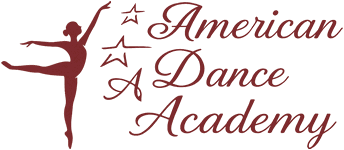
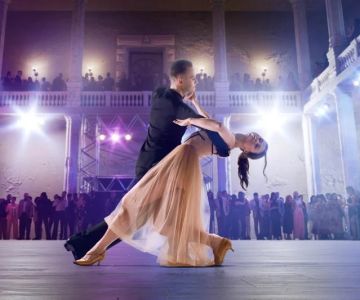
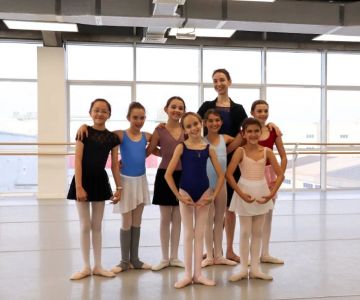
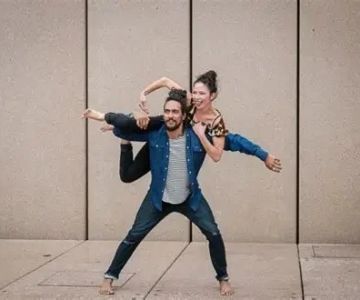
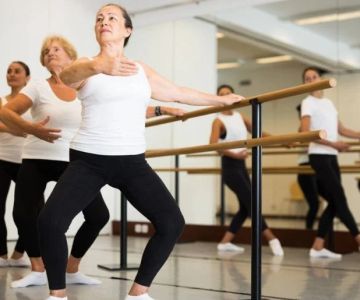
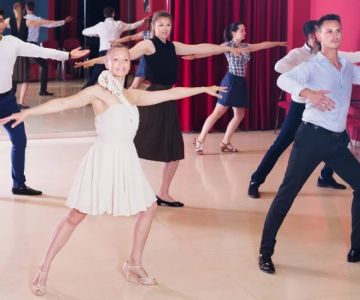
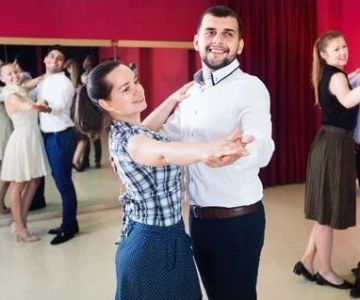
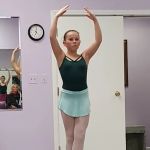 Barrington Dance Academy5.0 (22 reviews)
Barrington Dance Academy5.0 (22 reviews)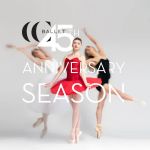 Canyon Concert Ballet4.0 (17 reviews)
Canyon Concert Ballet4.0 (17 reviews) Big City Dance Center LLC4.0 (25 reviews)
Big City Dance Center LLC4.0 (25 reviews)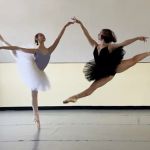 Tye Chua Dance & Kalamazoo Ballet5.0 (18 reviews)
Tye Chua Dance & Kalamazoo Ballet5.0 (18 reviews)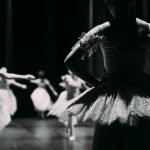 Fenton Ballet Theatre4.0 (24 reviews)
Fenton Ballet Theatre4.0 (24 reviews) Front Street Dance Center5.0 (7 reviews)
Front Street Dance Center5.0 (7 reviews) Are There Dances in Middle School? What Students and Parents Should Know
Are There Dances in Middle School? What Students and Parents Should Know How a Dance School in Instagram Builds Community and Success
How a Dance School in Instagram Builds Community and Success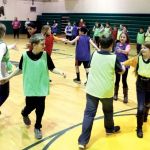 Why Do Schools Teach Square Dancing?
Why Do Schools Teach Square Dancing?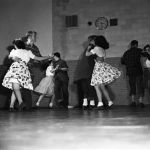 Why Was Square Dancing Taught in School?
Why Was Square Dancing Taught in School? Why Swing Dance Is Popular for Adults
Why Swing Dance Is Popular for Adults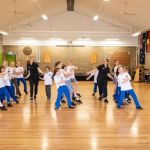 A School Dance: How to Prepare, Shine, and Make It Unforgettable
A School Dance: How to Prepare, Shine, and Make It Unforgettable